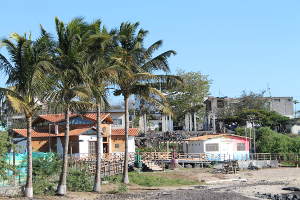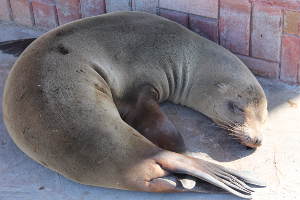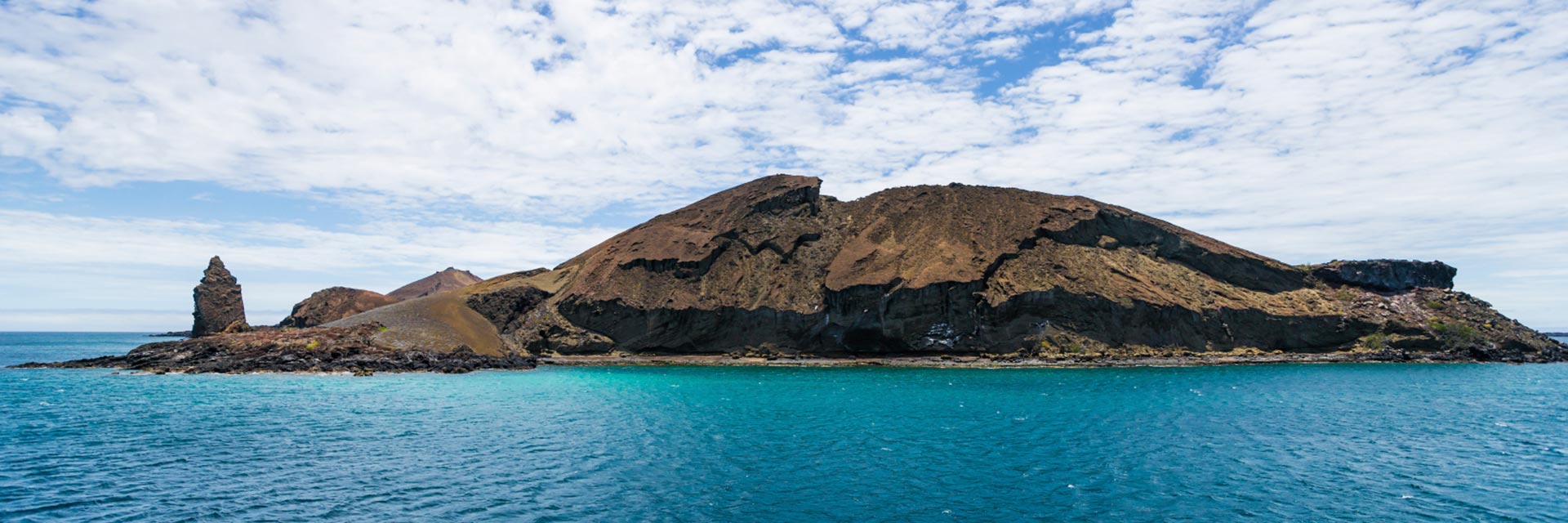Learn Spanish on San Cristóbal
 In 1835 a nomadic biologist named Charles Darwin landed on the Galapagos Islands, on one of the archipelago's oldest geographical formations – San Cristóbal. Today, you'll not only find some of the world's most pristine flora and fauna here, but also the chance to learn Spanish on San Cristóbal Island with us. Read on!
In 1835 a nomadic biologist named Charles Darwin landed on the Galapagos Islands, on one of the archipelago's oldest geographical formations – San Cristóbal. Today, you'll not only find some of the world's most pristine flora and fauna here, but also the chance to learn Spanish on San Cristóbal Island with us. Read on!
First class facilities
At Ailola Galapagos we like to think of ourselves as pioneers in Galapagos Island learning opportunities. Since we first began offering classes here in 1998, we've had time to source out ideal facilities for Spanish-language learning. These include:
- Unparalleled, premium Spanish classes on San Cristóbal Island, delivered to you directly at your accommodation
- Immediate access to our chosen guesthouse on San Cristóbal – just in case you forget your Spanish dictionary!
- Comfortable study spaces for groups and individuals, where you'll work with your very own University-educated native Spanish teacher
- No need to take materials with you, just bring a pocketsize dictionary, and our teacher will take everything else you need to study Spanish on San Cristóbal Island
Location
Given their significance for tourism and conservation, getting to the Galapagos Islands is easier than you might think. Check out how we do it:
- Fly. You'll travel from Guayaquil or Quito (usually connecting in Guayaquil) to the airport in Puerto Baquerizo Moreno, where you'll be met by your teacher (if he or she hasn't already traveled all the way from the mainland with you)
- Ride. Just over 10 minutes from the airport, you'll be arriving to your accommodation on San Cristóbal in no time.
- Move on. For those students wishing to move on to our courses on Santa Cruz Island, we'll take a ferry!
School fact sheet
- Founded in: 1998, one of the first Spanish programs of its type
- Distance to town center: You'll study Spanish on San Cristóbal Island at a guesthouse that's in walking distance from just about everything
- Distance from Quito: 2-3 hours
- Free Internet access/WiFi: Yes!
- Maximum class size: 6 students
- High season: July to September, December to January
- Volunteering opportunities: Yes!
- Conversation sessions: Yes, and they're free!
Top-5 things to see and do

- Animal spotting. No matter which part of the 215-squared-mile island you're at, you'll have no problem spotting animals! San Cristóbal is home to sea lions, dolphins, marine iguanas, native seagulls, and, of course, the world-famous Giant Tortoises of the Galapagos Islands. To keep things interesting, each part of the island is famous for different types of species.
- Visit San Cristóbal Interpretive Center. The Galapagos Islands National Park information center is the perfect place to start getting to know our famous archipelago. It offers visitors a complete documented history of the islands, including information on its communities (human and animal), preservation culture, and volcanic origins.
- Enjoy beaches diverse in flora and fauna. One of the best beach options in San Cristóbal is Puerto Chino. Another option is Cerro Brujo, a site that includes a bird-watching lookout and coral sand beach where visitors can swim and snorkel. Cerro Brujo was of the first places Charles Darwin visited when he arrived to San Crist&oacure;bal.
- Get close to Giant Tortoises. Let's face it! You've come all the way to the Galapagos Islands, so you're going to want to see a Giant Tortoise! A hike to the Tortoise Reserve near the Media Luna Cone on San Cristóbal is your best. It's here you'll also find lava lizards, geckos and mockingbirds. For a more informative visit, try the Cerro Colorado Tortoise Reserve, where you'll discover a man-made breeding program.
- Visit El Junco. In the southern highlands of San Cristóbal is the archipelago's largest fresh water lake. El Junco is not your average lake – it sits in the collapsed cone of an extinct volcano! Today, you'll find a range of unique birds here like the white-cheeked pintail duck and frigate birds. It takes a 45-minute bus ride and a short hike past the farming community of El Progreso (the oldest community on the Galapagos Islands) to get there.
Note: Students wishing to study Spanish on San Cristóbal must sign up for at least 2 weeks on the Galapagos Islands, with at least 1 week on San Cristóbal. You can combine the other week with courses on Santa Cruz or with our traveling classroom program.









